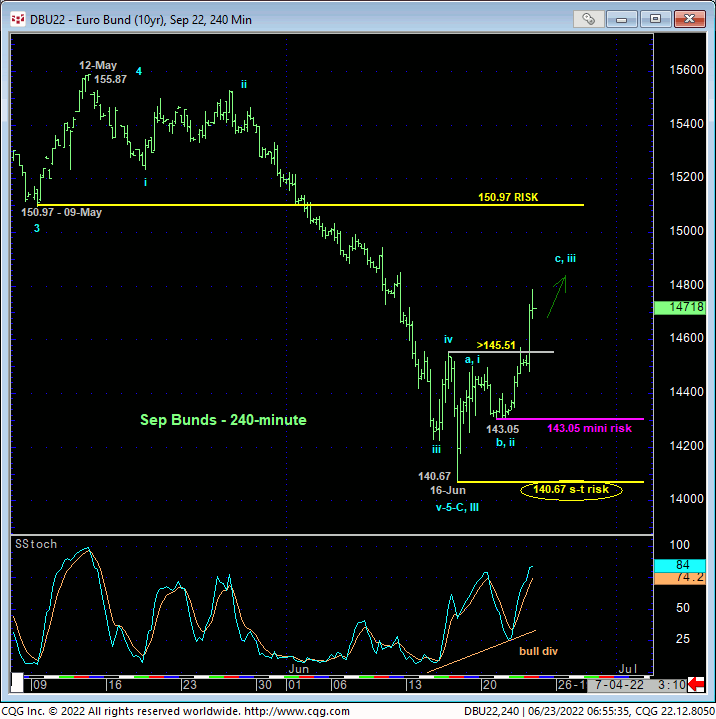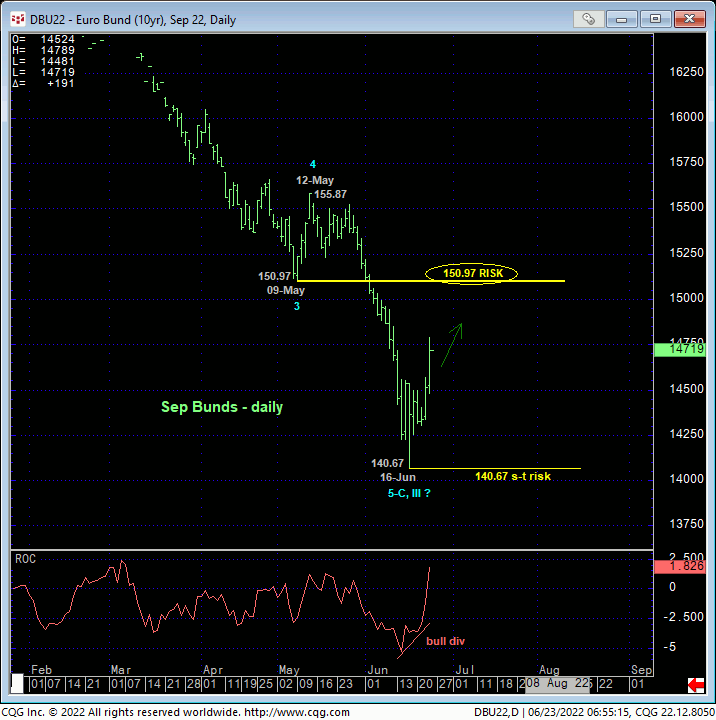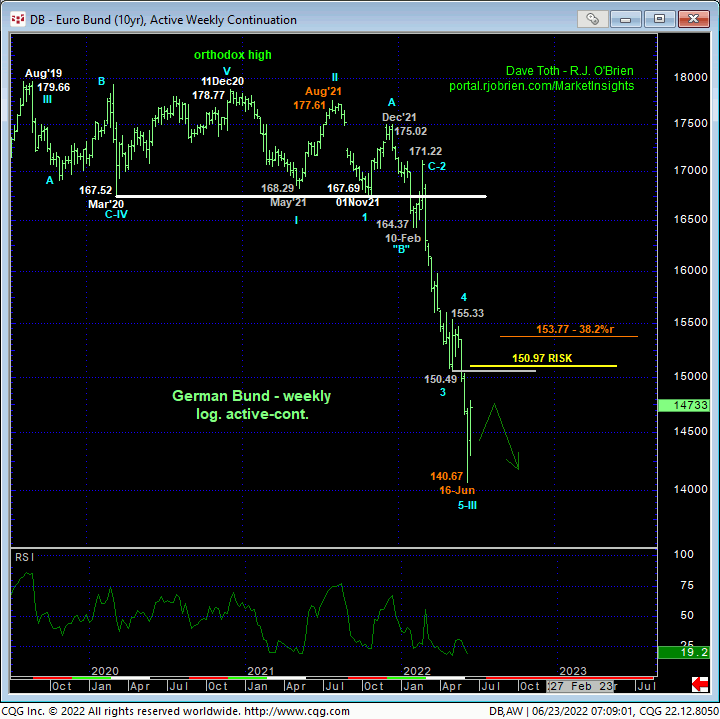
Last week, we discussed bullish divergences in short-term T-note and eurodollar momentum that have at least temporarily stemmed their secular bear markets and exposed corrective recoveries that could be relatively big. With overnight’s clear break above 15-Jun’s 145.51 corrective high and short-term risk parameter discussed in 16-Jun’s Technical Blog, the Sep bund contract has joined TYs and EDs in confirming a bullish divergence in short-term momentum and exposing a correction of at least May-Jun’s portion of the secular bear from 155.87 to 16-Jun’s 140.67 low. And by breaking above 17-Jun’s 144.99 initial counter-trend high, the 240-min chart shows that this market has identified Tue’s 143.05 low as the latest smaller-degree corrective low it is now required to sustain gains above to maintain a more immediate bullish count. Its failure to do so will render the recovery from 140.67 another 3-wave and thus corrective event that would then re-expose the secular bear. Per such, 143.05 and certainly 140.67 serve as our new mini and short-term risk parameters from which traders can objectively base non-bearish decisions like short-covers and cautious bullish punts.


From a long-term perspective however, the magnitude of the secular bear market is such that even with today’s spike higher, the past week’s recovery thus far falls well within the bounds of a mere corrective hiccup within the still-arguable secular bear trend. As recently discussed, to even defer, let alone threaten the massive bear market, we believe this market has to recover above at least former 150.97-area support-turned-resistance. And even then, the market would still be shy of 12-May’s 155.87 larger-degree corrective high needed to, in fact, break the long-term downtrend and even a Fibonacci minimum 38.2% retrace of Aug’21 – Jun’22’s major 3rd-Wave meltdown from 177.61 to 140.67.
This major difference between short- and long-term risk parameters once again brings the ever-present issue of technical and trading SCALE to the forefront. Today’s relative strength clearly is sufficient for short-term traders with tighter risk profiles to move from a bearish stance to a neutral-to-cautiously-bullish policy. It is of an INsufficient scale for long-term institutional players to throw the towel in on the long-term bear. In effect, the short-term trend is up within the still-arguable long-term downtrend, so traders need to match market risk to their personal risk profiles. Long-term institutional players, however, have the option of paring or neutralizing bearish exposure, acknowledging and accepting whipsaw risk, back below 143.05 and/or 140.67, in exchange for steeper nominal risk above 150.97.
In sum, the market has identified key flexion points and risk parameters at 140.67, 143.05 and 150.97. Traders are advised to toggle directional biases around these levels commensurate to their personal risk profiles. We anticipate further lateral-to-higher prices of indeterminable scope until the market fails below at least 143.05. We will be watchful for a bearish divergence in short-term momentum needed to arrest the current rebound and expose at least a steeper corrective retest of the recent lows/support and possibly re-expose the secular bear.


